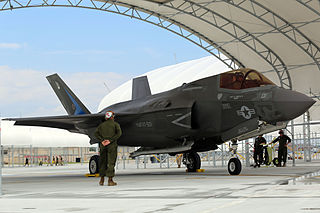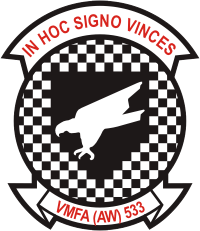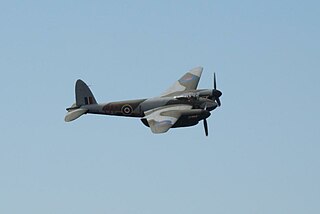| Roscroggan | |
|---|---|
Location within Cornwall | |
| OS grid reference | SW647421 |
| Unitary authority | |
| Ceremonial county | |
| Region | |
| Country | England |
| Sovereign state | United Kingdom |
Roscroggan is a hamlet north of Camborne in Cornwall, England. [1]
| Roscroggan | |
|---|---|
Location within Cornwall | |
| OS grid reference | SW647421 |
| Unitary authority | |
| Ceremonial county | |
| Region | |
| Country | England |
| Sovereign state | United Kingdom |
Roscroggan is a hamlet north of Camborne in Cornwall, England. [1]
In the Second World War, on Friday 24 July 1942, a Bristol Beaufort twin-engine torpedo bomber, AW288, of No. 86 Squadron RAF crashed into the disused Roscroggan Chapel. All four of the crew perished at the scene. [2]

The Bristol Type 156 Beaufighter is a British multi-role aircraft developed during the Second World War by the Bristol Aeroplane Company. It was originally conceived as a heavy fighter variant of the Bristol Beaufort torpedo bomber. The Beaufighter proved to be an effective night fighter, which came into service with the Royal Air Force (RAF) during the Battle of Britain, its large size allowing it to carry heavy armament and early airborne interception radar without major performance penalties.

The Bristol Beaufort is a British twin-engined torpedo bomber designed by the Bristol Aeroplane Company, and developed from experience gained designing and building the earlier Blenheim light bomber. At least 1,180 Beauforts were built by Bristol and other British manufacturers.

The Mull of Kintyre is the southwesternmost tip of the Kintyre Peninsula in southwest Scotland. From here, the Antrim coast of Northern Ireland is visible on a calm and clear day, and a historic lighthouse, the second commissioned in Scotland, guides shipping in the intervening North Channel. The area has been immortalised in popular culture by the 1977 hit song "Mull of Kintyre" by Kintyre resident Paul McCartney's band of the time, Wings.

The AgustaWestland AW109, originally the Agusta A109, is a lightweight, twin-engine, eight-seat multi-purpose helicopter designed and initially produced by the Italian rotorcraft manufacturer Agusta. It was the first all-Italian helicopter to be mass-produced. Its production has been continued by Agusta's successor companies, presently Leonardo S.p.A..

Marine Corps Air Station Beaufort or MCAS Beaufort is a United States Marine Corps (USMC) air base located 5 kilometres (3.1 mi) northwest of the central business district of Beaufort, a city in Beaufort County, South Carolina, United States. About 4,700 personnel serve at the station, and it is home to four Marine Corps F/A-18 Hornet fighter-attack squadrons and one F-35B Lighting II training squadron.

British International Helicopter Services (BIH), owned by Bristow Group, is a British-owned helicopter operator. It operates a fleet of ten helicopters covering search and rescue, offshore, defence, charter and flying training activities from its bases at Newquay Airport, Coventry Airport and RAF Mount Pleasant in the Falkland Islands.

Marine All Weather Fighter Attack Squadron 224 is a United States Marine Corps F/A-18 Hornet squadron. Also known as the "Fighting Bengals", the squadron is based at Marine Corps Air Station Beaufort, South Carolina and falls under the command of Marine Aircraft Group 31 (MAG-31) and the 2nd Marine Aircraft Wing. The Bengals are one of only two Marine F/A-18D Hornet Squadrons currently operating out of MCAS Beaufort, S.C. The other is the Hawks.

Marine All-Weather Fighter Attack Squadron 533 is a United States Marine Corps F/A-18 Hornet squadron. Also known as the "Hawks", the squadron is based at Marine Corps Air Station Beaufort, South Carolina and falls under the command of Marine Aircraft Group 31 (MAG-31) and the 2nd Marine Aircraft Wing.

Marine Fighter Attack Training Squadron 501 (VMFAT-501) is a training squadron in the United States Marine Corps, consisting of 28 F-35B Lightning II aircraft and serves as the Fleet Replacement Squadron. Known as the "Warlords," the squadron is based at Marine Corps Air Station Beaufort, South Carolina and falls administratively under Marine Aircraft Group 31 and the 2nd Marine Aircraft Wing. The squadron has assumed the lineage of VMFA-451 which was originally known as the “Blue Devils” and saw action during World War II and Operation Desert Storm. They were decommissioned on January 31, 1997.

The AgustaWestland AW139, now known as the Leonardo AW139, is a 15-seat medium-sized twin-engined helicopter developed and produced by the Anglo-Italian helicopter manufacturer AgustaWestland. It is marketed at several different roles, including VIP/corporate transport, military use, offshore transport, fire fighting, law enforcement, search and rescue, emergency medical service, disaster relief, and maritime patrol.

The Cornwall Air Ambulance Trust is a charity that provides a dedicated helicopter emergency medical service (HEMS) for Cornwall and the Isles of Scilly. The service also has two critical care cars that operate when the helicopter is unable to fly. Together they attend about 1,100 incidents per year. As of December 2018, the helicopter service had flown over 28,000 missions since 1987.

Glenside Museum is situated within the Glenside Campus of the University of the West of England in Fishponds, Bristol, England.
Air ambulance services in the United Kingdom provide emergency medical functions, patient transport between specialist centres, or medical repatriation. Services are provided by a mixture of organisations, operating either helicopters or fixed-wing aircraft. All emergency air ambulance helicopters in England, Wales, and Northern Ireland are operated by charities, while Scotland has one charity service in addition to its two NHS-funded helicopters. Fixed-wing air ambulances, used for patient transport, may be government or privately operated.

The CA-11 Woomera was a production development of the earlier CA-4 Wackett Bomber prototype, and was an Australian torpedo and dive bomber aircraft that was designed and constructed by the Commonwealth Aircraft Corporation (CAC) during World War II. The order for the Woomera was cancelled before it became operational with the Royal Australian Air Force (RAAF).
Broadmeadow Aerodrome was an aerodrome located at District Park, Broadmeadow, Newcastle, Australia, operating from 1929 to 1963.
Sir Archibald Russell, CBE, FRS was a British aerospace engineer who worked most of his career at the Bristol Aeroplane Company, before becoming managing director of the Filton Division when Bristol merged into British Aircraft Corporation in 1960. He also served as the vice-chairman of the BAC-Sud Aviation Concorde Committee that produced the Concorde, working alongside Morien Morgan. His designs include the Blenheim, Britannia, Type 188 and many others. He was known throughout his career as a perfectionist, as well as his criticism for those who did not measure up – criticisms that included ministers, civil servants, the Brabazon Committee and BOAC.

Tregonning Hill is the westerly of two granite hills overlooking Mount's Bay in west Cornwall, United Kingdom, the other being Godolphin Hill. They are approximately 6 kilometres (3.7 mi) west of the town of Helston. The Plymouth chemist William Cookworthy mixed china stone with kaolin, mined from the hill to make Plymouth porcelain in 1768; which was the first time hard-paste porcelain was made in Britain. Part of the hill is designated as a Site of Special Scientific Interest (SSSI) and at the date of notification (1994) was the only known site of western rustwort in Great Britain.

762 Naval Air Squadron was a Naval Air Squadron of the Royal Navy's Fleet Air Arm. It formed at RNAS Yeovilton in March 1942 as an Advanced Flying Training School. Almost immediately the squadron relocated to RNAS St Merryn, but before the end of the year, it was back at Yeovilton. 762 NAS disbanded nine months later.
The following events occurred in August 1954:

Pool and Tehidy is an electoral division of Cornwall in the United Kingdom which returns one member to sit on Cornwall Council. The current councillor is Conservative Philip Desmonde.